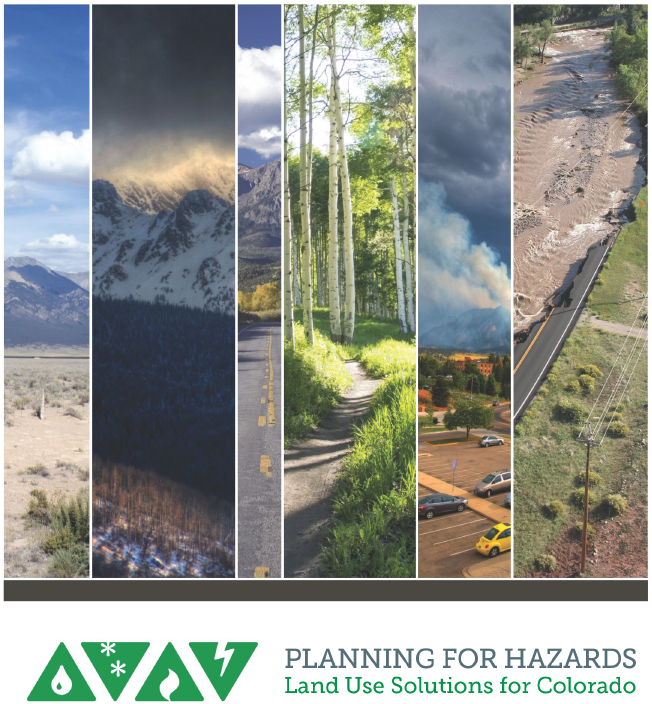This year, over six million acres have burned across the country, impacting communities and forcing evacuations. While firefighters are doing a fantastic job, they cannot be 100 percent effective at fire suppression. Utilizing land use planning to prepare our communities for the dangers of wildfire can drastically mitigate the impact of wildfires to local infrastructure, watersheds, housing and economies. by Ben Yellin, MCP
Read MoreTailored to land use planners, Planning for Hazards: Land Use Solutions for Colorado provides detailed information about assessing a community’s risk level to hazards and describes how to implement numerous land use planning tools and strategies in a manner that reduces risk. While the guide’s examples and data sources are largely Colorado-specific, the description of tools and sample land use code language provide a good starting point for any municipality or county in the West or across the country. by Logan Sand, Recovery and Resilience Planner, Colorado Department of Local Affairs
Read MoreMore frequent and intense climate events result in increased demand on our emergency response systems, greater financial impacts, and greater public health impacts. The challenge is to effectively communicate the ever-increasing demands these events place on our communities and get individuals, communities, and government to prepare. by Katherine Mortimer, Santa Fe, New Mexico
Read MoreClimate adaptation planning provides a solution to the historic lack of integration of environmental (natural resource) stewardship, land use planning, water resource planning and economic development. by Gretel Follingstad
Read More



